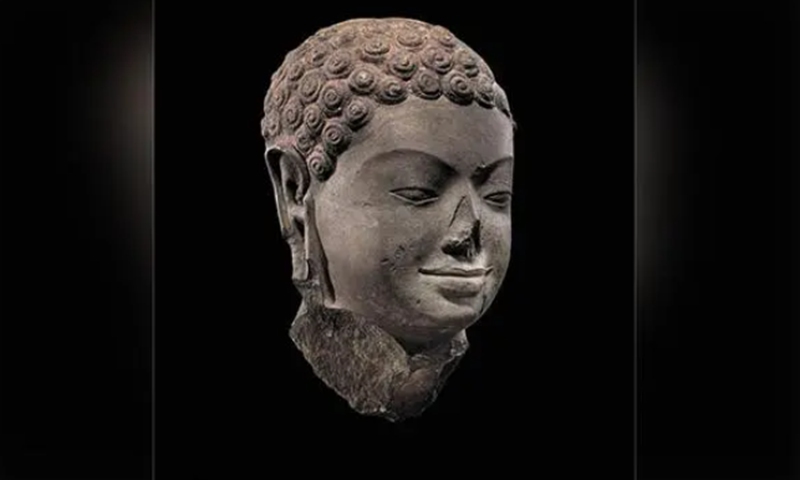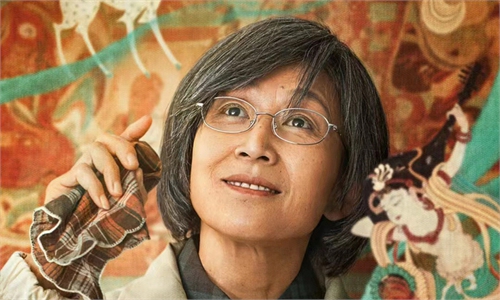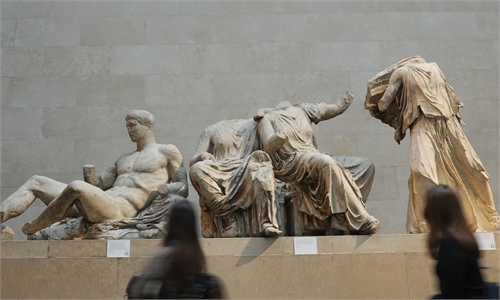ARTS / CULTURE & LEISURE
Met’s decision to return artifacts to Cambodia, Thailand a positive sign: expert

A head of Buddha from seventh century is one of the artifacts to be returned to Cambodia by the Met. Photo: Courtesy of US Department of Justice
The Metropolitan Museum of Art (Met) has initiated the repatriation of 14 sculptures to Cambodia and two to Thailand. The move can be regarded as a positive signal and is worth encouraging, a Chinese expert said.
According to a statement released by the Met on Friday, the 16 sculptures include all of the Khmer works known by the museum to be associated with the late antique collector Douglas Latchford. The museum will temporarily display a selection of the sculptures - which will be presented as the repatriated heritage of Cambodia and Thailand, respectively - while arrangements are made for their return to their countries of origin.
"The Met has been diligently working with Cambodia and the US Attorney's Office for years to resolve questions regarding these works of art, and new information that arose from this process made it clear that we should initiate the return of this group of sculptures," said Max Hollein, the museum's director and chief executive officer.
The Met greatly values open dialogue with Cambodia and Thailand and is committed to pursuing partnerships and collaborations with their counterparts in the two countries that will advance the world's understanding and appreciation of Khmer art, said the statement.
"Some Chinese artifacts have experienced the same tragedy of being trafficked abroad. Dunhuang (frescoes) would be a case in point. Actually, the number of Chinese artifacts that have been looted and then ended up in Western museums this way, I would say probably would be much larger than Cambodia and Thailand, which means more action is needed from both sides," Huo Zhengxin, a law professor at the China University of Political Science and Law, told the Global Times.
On June 13, 1907, Marc Aurel Stein, a British archaeologist and explorer, departed from the Mogao Caves in Dunhuang, Northwest China's Gansu Province, with more than 20 boxes of writings, paintings and other artifacts that were acquired through deceptive means.
While the Met plans to voluntarily return the Khmer Sculptures to Cambodia and Thailand, Athens' call for the return of the Parthenon Sculptures currently housed at the British Museum in London has been drawing wide attention as well. Greece has repeatedly demanded the return of the marbles, which British diplomat Thomas Bruce stripped from the Parthenon temple in Athens in the early 19th century.
"It has always been a deadlock. If the Met can take the initiative to do the right thing, it will certainly be a very positive and concrete example among Western museums," said Huo.
If the move can encourage more Western museums to take a more positive attitude toward the return and repatriation of cultural relics that have been illegally lost, it would surely be worth encouraging, he added.
Meanwhile, Huo also noted that generally speaking, the cultural relics looted from Asia to Western countries have not yet received the attention that they deserve by the international community. The entire international community and Western society should reflect on the history.
In addition to Western countries, Japan also looted a lot of Chinese artifacts during its invasion of China and illegally took away cultural relics from Southeast Asian countries that have not been returned, Huo pointed out.
"It has always been an unresolved issue. It seems that the international community has paid even less attention to Japan's looting behavior, as if this is something that has never happened," he said.


